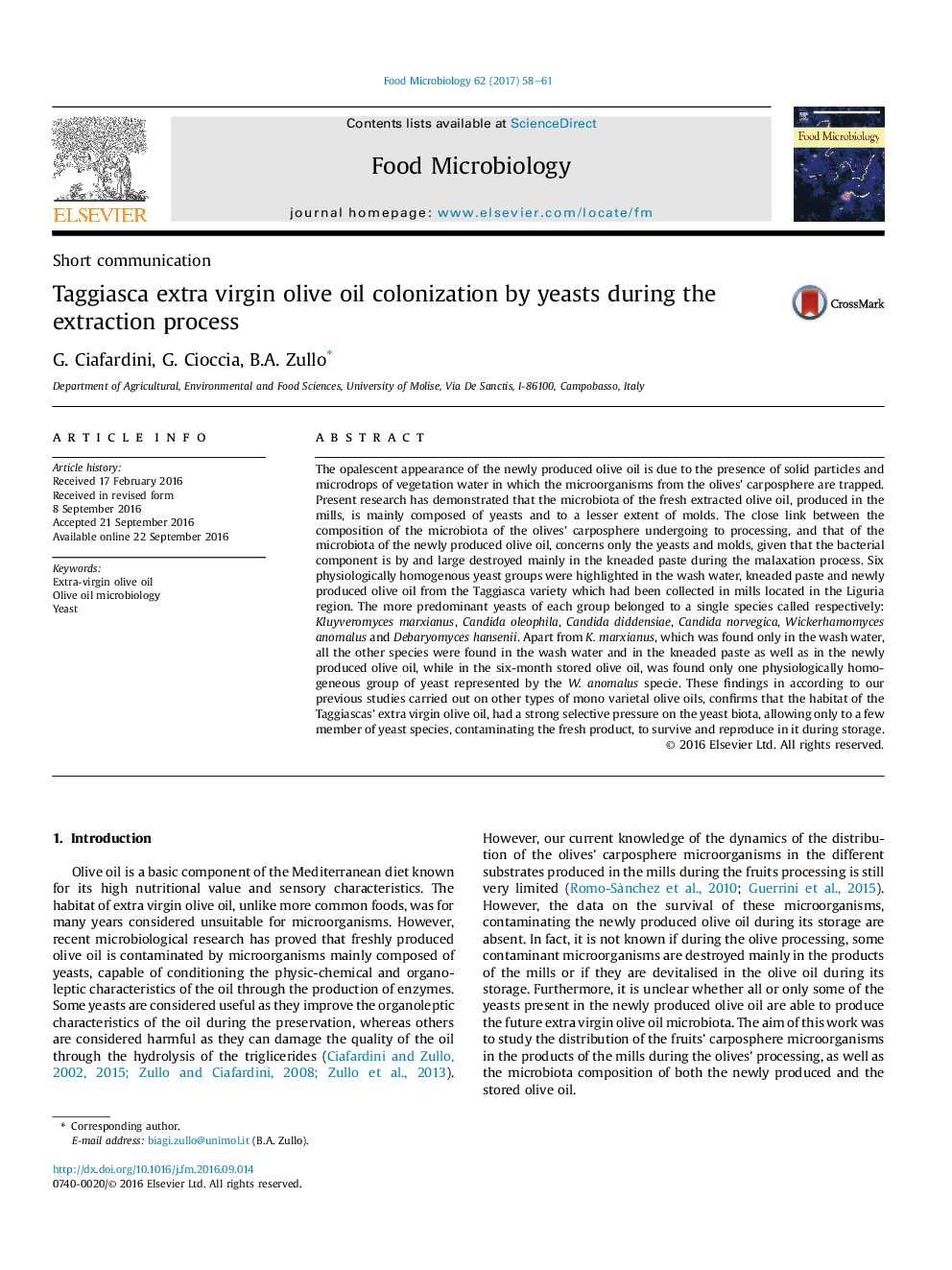| کد مقاله | کد نشریه | سال انتشار | مقاله انگلیسی | نسخه تمام متن |
|---|---|---|---|---|
| 4362533 | 1616239 | 2017 | 4 صفحه PDF | دانلود رایگان |
• Components of the olives’ microbiota were destroyed in the kneaded paste in the mill.
• Taggiasca olive oil was contaminated by many yeast species, but only one survived later.
• The predominant yeast specie found in the Taggiasca olive oil was Wickerhamomyces anomalus.
The opalescent appearance of the newly produced olive oil is due to the presence of solid particles and microdrops of vegetation water in which the microorganisms from the olives’ carposphere are trapped. Present research has demonstrated that the microbiota of the fresh extracted olive oil, produced in the mills, is mainly composed of yeasts and to a lesser extent of molds. The close link between the composition of the microbiota of the olives’ carposphere undergoing to processing, and that of the microbiota of the newly produced olive oil, concerns only the yeasts and molds, given that the bacterial component is by and large destroyed mainly in the kneaded paste during the malaxation process. Six physiologically homogenous yeast groups were highlighted in the wash water, kneaded paste and newly produced olive oil from the Taggiasca variety which had been collected in mills located in the Liguria region. The more predominant yeasts of each group belonged to a single species called respectively: Kluyveromyces marxianus, Candida oleophila, Candida diddensiae, Candida norvegica, Wickerhamomyces anomalus and Debaryomyces hansenii. Apart from K. marxianus, which was found only in the wash water, all the other species were found in the wash water and in the kneaded paste as well as in the newly produced olive oil, while in the six-month stored olive oil, was found only one physiologically homogeneous group of yeast represented by the W. anomalus specie. These findings in according to our previous studies carried out on other types of mono varietal olive oils, confirms that the habitat of the Taggiascas’ extra virgin olive oil, had a strong selective pressure on the yeast biota, allowing only to a few member of yeast species, contaminating the fresh product, to survive and reproduce in it during storage.
Journal: Food Microbiology - Volume 62, April 2017, Pages 58–61
